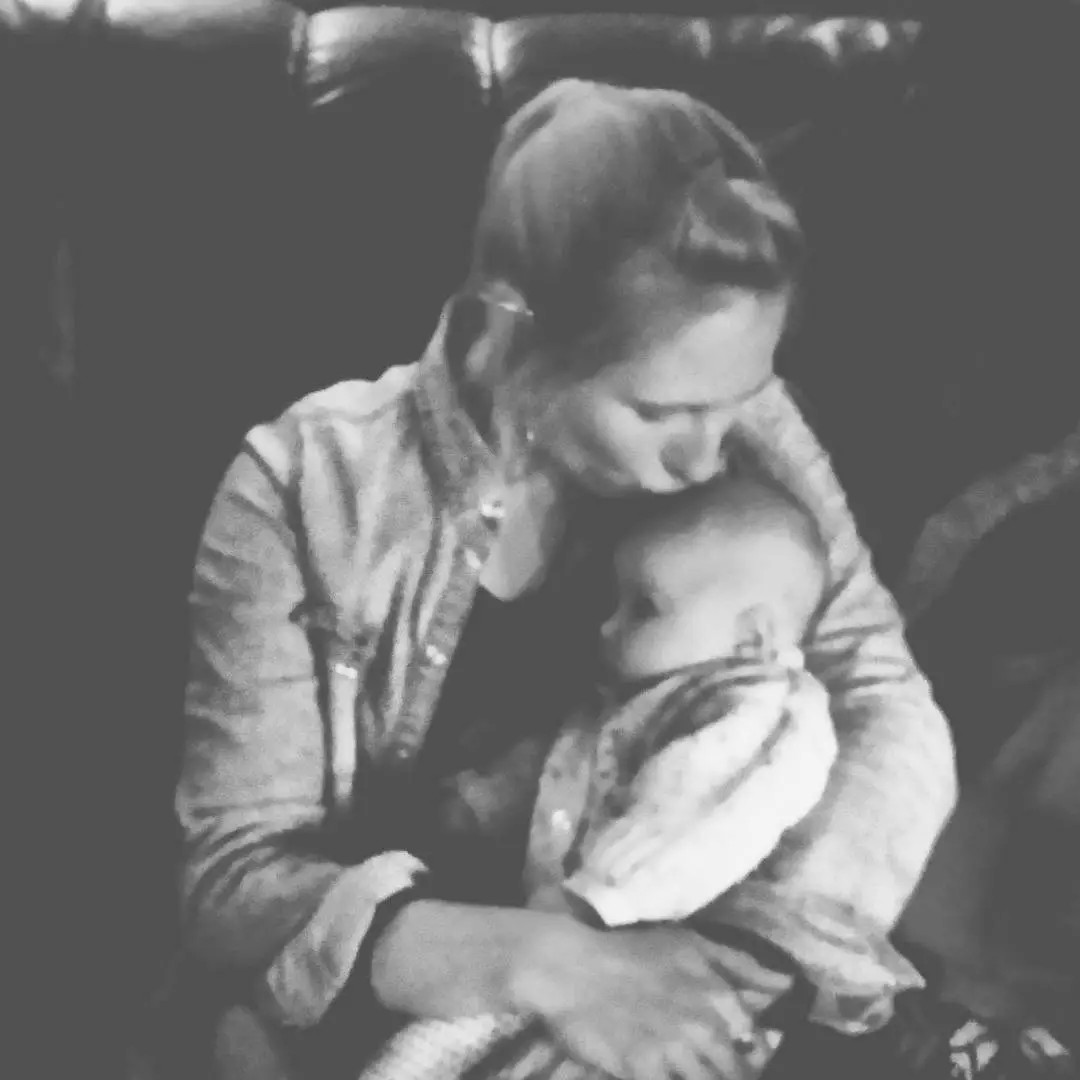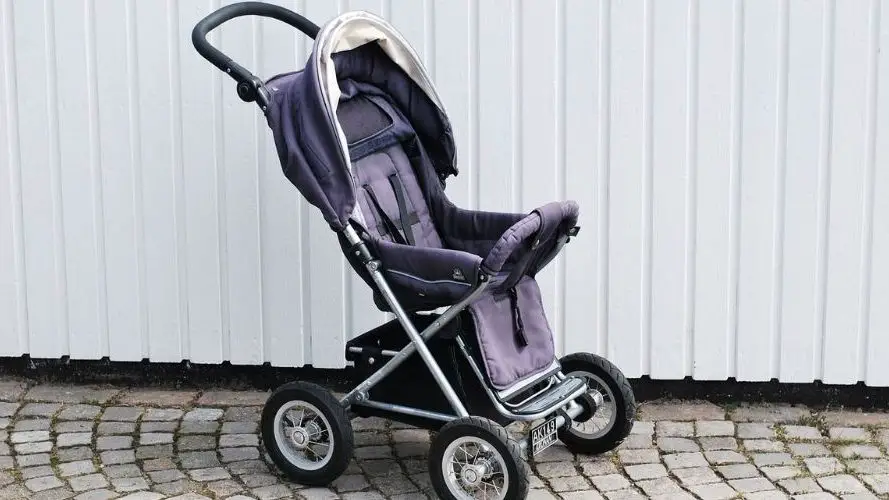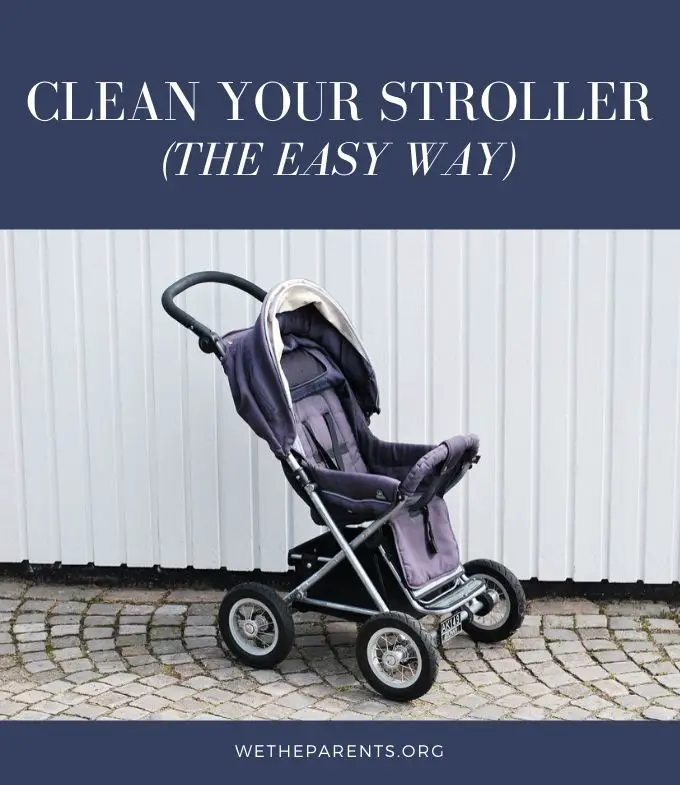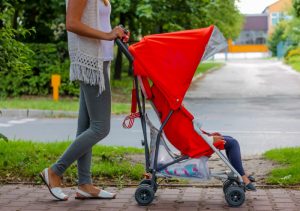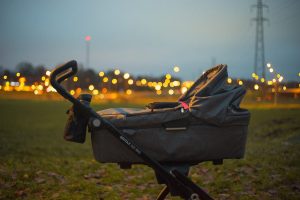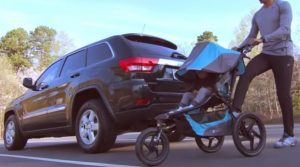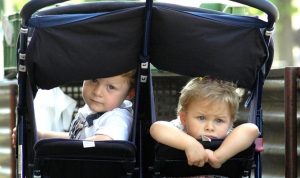Is your baby’s stroller dirty and due for a deep cleaning? If so, you’re forgiven for feeling overwhelmed by the task. After all, there is a frame to disassemble, fabric to remove, crumbs to suss out, and mold to check for.
Hey, no one ever accused babies of being good housekeepers.
Let’s go over how to clean a stroller thoroughly so that you can tackle this task in no time.
In this article:
How often should I clean my stroller?
You should be wiping down your stroller as often as possible to kill any germs that have found their way onto its surfaces. Addressing messes as soon as you can is a surefire way to shave time off future deep cleans.
Speaking of those dreaded deep cleans, wherein you take the stroller apart and scrub everything, they should generally be performed at least twice a year. This number goes up if you’re frequently venturing to explore places where your stroller picks up elements like sand or salt, which will have a corrosive effect.
Clean your stroller in 6 easy steps
The good news is that even though your pram suddenly looks like a ten-foot-tall, very complex machine, cleaning your stroller is quite simple as long as you take it step-by-step and stay a little organized, so let’s dive in!
#1 Check manufacturer’s instructions
It’s essential to whip out that ol’ instruction manual before you begin any deep clean. It’s here that you’ll find out whether or not any included fabric needs to be hand washed, if your accessories are dishwasher safe, and which products are and aren’t recommended for use.
You’ll also find instructions on how to safely disassemble and reassemble the wheels and frame, as well as tips on how to perform any required maintenance that will keep your stroller rolling smoothly.
If you don’t familiarize yourself with the manufacturer’s instructions, you run the risk of voiding your warranty should any damage occur during or after your stroller scrub-down.
#2 Cleaning checklist
There are a few things you’ll want to have on hand before you begin the deep-cleaning process. These may vary slightly based on what the instruction manual recommends for your specific model. You may also not need every cleaning product listed, as we will be going over specific mixtures to use for stains and/or mold spots.
What you’ll need:
- Large bucket
- Small, soft brush (e.g. toothbrush)
- Stiff bristled brush
- Bottle brush
- Terry Cloth
- Tools needed for disassembly and reassembly
- WD-40
- Compressed air can
- Vacuum
- Rubber gloves
- Face mask (if cleaning mold or using bleach)
- Baby-friendly soap
- Gentle detergent
- Baby safe disinfecting wipes
- Lemon Juice
- Salt
- Vinegar
- Bleach
#3 Cleaning stroller accessories
Many strollers come with cool add-ons, like trays, toys, or baskets. While useful, these accessories can also be a hotbed of germs which need to be regularly disinfected.
Plastic add-ons might be dishwasher safe. If not, use warm soap and water, or baby-safe wipes, to clean those dirty surfaces.
Stollers, like canopies, might be able to go straight into the washer. If not, hang tight, as we’ll get to how to handwash stroller fabric later in the article.
#4 Cleaning stroller fabric
Requiring the most elbow grease, how you wash your stroller’s seats, seat belts, and other fabric, is probably the most daunting part of stroller cleaning. These areas often get the full brunt of your baby’s…well, everything.
Crumb removal
The first set of steps to go through is the same for both machine-washable and handwash-only material.
- Brush as many crumbs off the fabric as you can.
- Take a handheld vacuum, or attach your regular vacuum’s narrowest nozzle accessory onto its hose, and suction out the remaining crumbs. Pay special attention to all crevices and where the seat meets the back of the stroller.
- Use compressed air to blow away crumbs that are stuck around seat straps and buckles.
- If the fabric is removable, take it off and give it a good shake to dislodge any debris that the vacuum missed.
- Machine-washable fabrics can now be laundered as per the manufacture’s guidelines.
Steps for handwashing stroller fabric
Mix a combination of one tablespoon of gentle dish soap and two cups of warm water into your bucket. If you prefer detergent, use about one teaspoon in your bucket of warm water.
For removeable stroller fabric
- Dip a toothbrush into the soap-water mixture and gently scrub out any noticeable spots.
- Submerge the fabric into your bucket and let it soak for at least five minutes.
- Gently knead or swirl the fabric around in the water.
- Rinse out the leftover soap with a hose, shower nozzle, or under the sink tap.
- Gently squeeze out the excess water.
- Lie flat to dry or reattach your damp fabrics to the stroller.
For Non-removable fabric
- Wet your toothbrush or bottle brush into your soap mixture and gently scrub in and around crevices.
- Dip your terry cloth into the bucket and wring it out thoroughly; the cloth should be wet but not dripping.
- Gently wipe down the fabric.
Do NOT fold your stroller and store it away until everything is completely dry.
Tough Fabric Stains
Babies can leave some, ahem, creative stains on everything they touch. Luckily, you can remove these unsightly spots on both machine-washable and handwash-only fabrics.
Machine-washable fabrics
- Presoak the material for at least 30 minutes in a mixture of cold water and Oxiclean (or your detergent of choice) to loosen the stains.
- Launder as per the manufacturer’s instructions.
- Dry in direct sunlight for a natural bleaching effect.
Handwash-only fabrics
- Mix baking soda and water into a paste.
- Gently work that paste into the stain with a soft-bristled nylon brush, not scrubbing too hard as you don’t want to put undue wear and tear on the fabric.
- Rinse thoroughly.
- Air dry in the sun to take advantage of nature’s gentle bleach.
#5 Removing mold and mildew
No one loves finding moldy spots and mildew stains on their belongings, especially when those surfaces are in regular contact with your baby. Alas, these types of stains are common, and, while they need a little more elbow grease, can be relatively easy to remove.
Be sure to wear a dust mask to avoid inhaling any spores that come loose throughout the cleaning process.
Clean mold and mildew stains outside to avoid inhaling dangerous spores.
Before treating
- Make a mixture of soap and water or detergent and water, as described above.
- With a stiff-bristled brush, gently scrub at any mold or mildew spots to work some of the stain loose.
White vinegar and water
This method works great, especially for large bleach stains, and it’s all-natural. Sure, the vinegar smell is unpleasant, but I promise you it will fade quickly.
- Mix 3 parts white vinegar to 2 parts warm water in a spray bottle.
- Spray affected area liberally.
- Allow it to sit for at least one hour.
- Rinse the fabric thoroughly with water.
- Dry the stroller in the sun.
Lemon Juice and Salt
This stain removing potion is best for smaller mold and mildew stains. Test a hidden spot of fabric before you try this method, as lemon juice can lighten the color of some materials.
- Wet the affected area with lemon juice.
- Sprinkle salt on top.
- Allow the stroller to dry completely in the sunlight.
Bleach
Bleach should be regarded as a last line of defense when it comes to mold and mildew stains. It can potentially discolor or even damage some materials (remember to check your instruction manual for products you should NOT use on your stroller model), and the fumes are unhealthy to breathe in.
On the other hand, it is also a very effective mold and mildew killer, so will get the job done with lasting results.
Always use gloves when handling bleach.
- Take your stroller outside; good ventilation is paramount when cleaning with bleach.
- Mix 2 tablespoons of non-chlorinated bleach with 1 quart of water.
- Even if bleach is listed as safe to use on the material, it is advisable to do a spot check on a small area of the fabric.
- With a brush, apply the mixture onto the affected areas.
- Let sit for at least 10 minutes.
- Launder the fabric as per the manufacturing instructions.
- Air dry outside, preferably in sunlight.
#5 Cleaning the stroller frame
After all that fabric-cleaning drama, you’ll be pleased to know that the frame is generally a much easier hill to climb.
- Begin by inspecting the entire frame to ensure it’s in working order and that none of it is bent or cracked.
- Check that the brakes are working correctly.
- Use your compressed air can or a brush to whisk away any crumbs stuck in or on the joints and poles.
- Use a gentle, baby-safe cleaner or terry cloth to wipe down each part of the frame. Be sure to give sticky areas an extra scrub with your terry cloth.
- Pat or wipe dry. If possible, avoid drying for an extended period in any direct sunlight, as this could potentially compromise the integrity of the frame.
Avoid using any particularly corrosive cleaners, like bleach or textured materials, when wiping down the frame, as these can weaken the frame’s strength and scratch the exterior.
#6 Cleaning stroller wheels
Your wheels are quite literally the foundation of your baby’s carriage and endure a lot of mileage over dirty surfaces. Needless to say, they need some good TLC during your deep clean.
To clean your wheels:
- If possible, remove the tires.
- Rinse off as much debris as possible with a hose, sink tap, or shower nozzle.
- Wipe the wheels down with soapy water and a soft towel.
- Use a bottle brush or toothbrush to get into crevices and between any spokes.
- Take a stiff brush and scrub away any stuck-on dirt in the treads.
- Rinse thoroughly.
- Pat or air dry.
- If necessary, lubricate the bearings with a non-stick based lubricant, like WD-40.
- Check the tire pressure (if applicable.)
Storage
Where you park your stroller is just as important as regular cleanings. Damp areas will foster the growth of mildew and mold, while too much direct sunlight will wash out the colors of an uncovered pram and make it look dingy.
When storing your stroller
Do
- Pick a cool, dry room.
- Invest in hanging hooks.
- If collapsible, be sure it is properly folded up.
- Buy a cover.
Do Not
- Put it away wet or muddy.
- Leave food crumbs on the fabric or in crevices, baskets, and cup holders.
- Keep it in direct sunlight for extended periods.
- Leave it in a damp room, like a basement or garage.
Wrapping up
We hope this article sums up how best to clean a stroller. Just remember to read your manufacturer’s instructions, use proper cleaning materials to disinfect surfaces thoroughly, remove any mold, and don’t be tempted to take shortcuts that could damage the integrity of your stroller.
Oh, and after all that cleaning work, you’ll be forgiven if you avoid puddles for a few days when you and baby are rolling around town. Happy travels!

